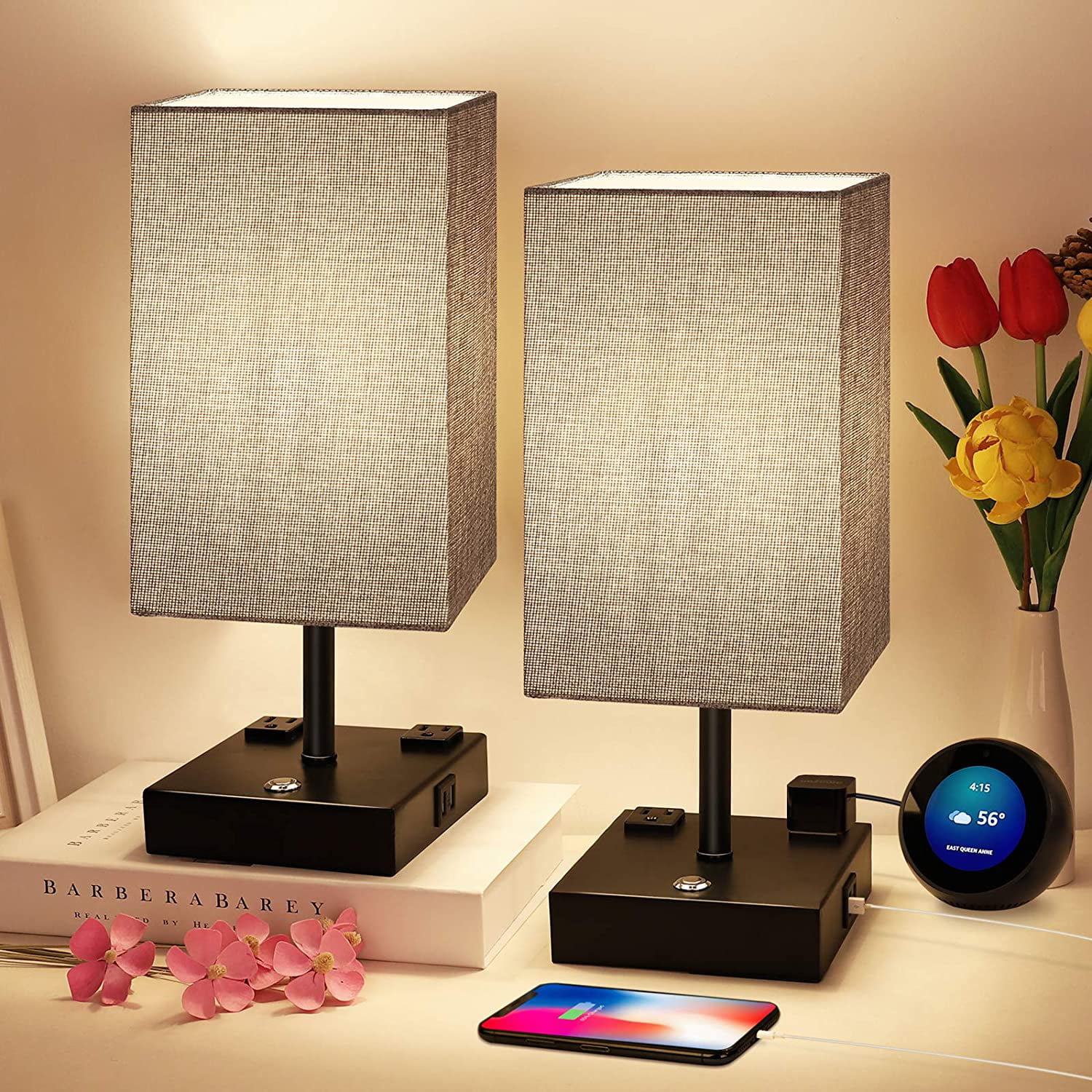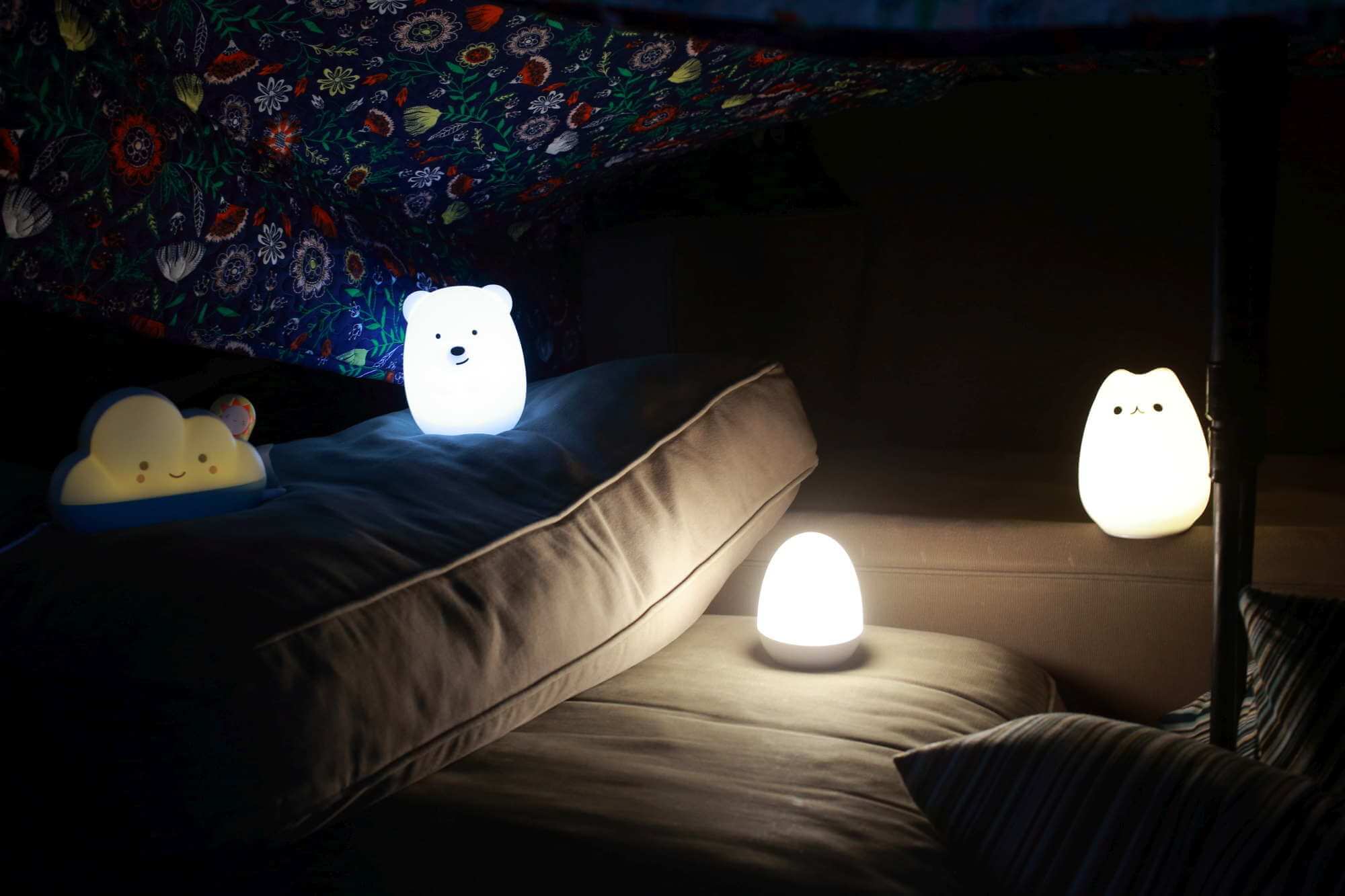Choosing the Right Night Light

A night light can transform your bedroom into a calming and comforting space, especially if you find it difficult to fall asleep in complete darkness. Choosing the right night light is crucial to create the perfect ambiance for your needs. It’s not just about finding a light source; it’s about finding one that complements your sleep preferences, age, and even the layout of your room.
Factors to Consider When Choosing a Night Light
When selecting a night light, several factors come into play, ensuring you choose the perfect fit for your bedroom.
- Age of the User: Consider the age of the user. For young children, a night light should be bright enough to provide comfort and security but not so bright that it disrupts their sleep. For adults, a dimmer light may be more suitable.
- Sleep Preferences: Are you sensitive to light? Do you prefer a warm or cool light? If you’re sensitive to light, choose a night light with a low brightness level and a warm color temperature. If you prefer a bright light, opt for a night light with adjustable brightness levels and a cool color temperature.
- Room Size and Layout: The size and layout of your room will also influence your choice. A small room might only require a single night light, while a larger room might benefit from multiple lights or a brighter light source.
- Desired Level of Brightness: The desired level of brightness is a crucial factor. Some people prefer a dim, subtle glow, while others might prefer a brighter light to feel more secure. Look for night lights with adjustable brightness settings to suit your preferences.
- Features: Consider features like color options, timers, and motion sensors. Color options allow you to personalize the ambiance, while timers help you automate the light’s on and off schedule. Motion sensors can automatically activate the light when you enter the room, providing added convenience and security.
Types of Night Lights, Best night light for bedroom
Different types of night lights offer unique advantages and disadvantages. Understanding these differences can help you make an informed decision.
- LED Night Lights:
- Pros: Energy-efficient, long lifespan, wide range of colors and brightness options, compact size.
- Cons: Can be too bright for some, some models may emit a blue light, which can disrupt sleep.
- Salt Lamps:
- Pros: Create a warm, relaxing ambiance, believed to have air-purifying properties, aesthetically pleasing.
- Cons: Can be expensive, may not be as bright as other types of night lights, require regular cleaning.
- Projector Night Lights:
- Pros: Project calming images or patterns on the ceiling, can be entertaining for children, create a relaxing atmosphere.
- Cons: Can be distracting for some, some models may be too bright, limited color options.
- Glow-in-the-Dark Stickers:
- Pros: Affordable, easy to apply, provide a gentle, comforting glow.
- Cons: Limited brightness, may not last long, require charging with light.
Popular Night Light Brands
Here’s a comparison of popular night light brands, highlighting their features, pros, and cons.
| Brand | Features | Pros | Cons |
|---|---|---|---|
| Philips Hue | Smart home integration, customizable colors and brightness, timers, motion sensors | Highly customizable, excellent quality, wide range of features | Can be expensive, requires a hub for smart home integration |
| Conair | Various styles and colors, adjustable brightness, timers | Affordable, reliable, wide range of options | May not have as many features as premium brands |
| VTech | Projector night lights, soothing sounds, timers | Ideal for children, entertaining and calming features | May not be suitable for adults |
| iLive | LED night lights, various colors and brightness options, compact size | Energy-efficient, affordable, portable | May not have advanced features like timers or motion sensors |
Safety and Functionality

A night light can be a comforting addition to your bedroom, but it’s crucial to prioritize safety and functionality to ensure a peaceful and secure sleep environment. Let’s explore some important considerations when choosing and using a night light.
Safety Considerations
Safety is paramount when using any electrical device, especially in a bedroom. Here are some key aspects to consider:
- Fire Hazards: Night lights, like any electrical appliance, can pose a fire hazard if not used properly. Always choose night lights with UL or ETL certification, which indicates they have met safety standards. Avoid placing night lights near flammable materials, such as curtains or bedding.
- Electrical Safety: Opt for night lights with a low-voltage design, typically powered by USB or batteries. Avoid using night lights with frayed cords or damaged plugs, and always unplug them when not in use. Regularly inspect the cords and plugs for any signs of wear and tear.
- Potential for Eye Strain: While night lights provide a soft glow, prolonged exposure to bright light, even at low levels, can potentially lead to eye strain. Choose night lights with adjustable brightness levels and position them away from your direct line of sight to minimize potential eye discomfort.
Functionality Features
Night lights can offer a range of features that enhance their functionality and cater to your specific needs. Consider these features when making your choice:
- Dimming Options: Adjustable brightness settings allow you to customize the level of illumination, creating a comfortable and calming atmosphere for sleep.
- Multiple Brightness Settings: Some night lights offer multiple brightness levels, providing flexibility for different situations. You can use a brighter setting for tasks like reading in bed and a dimmer setting for a more soothing ambiance.
- Automatic Shut-Off Timers: Timers allow you to set a specific duration for the night light, ensuring it turns off automatically after a predetermined time, promoting energy efficiency and reducing the risk of overheating.
- Remote Control Capabilities: Remote control features provide convenient operation without having to get out of bed. You can easily adjust the brightness, turn the light on or off, and even set timers remotely.
Creating a Safe and Comfortable Sleeping Environment
A well-chosen night light can contribute to a safe and comfortable sleep environment. Here are some tips:
- Choose a Soft, Warm Light: Opt for night lights that emit a soft, warm white or amber light, as these colors are generally more soothing and less disruptive to sleep.
- Position the Night Light Strategically: Place the night light in a location that provides sufficient illumination without being directly in your line of sight. Consider using a night light with a flexible arm or a clip-on design for easy placement.
- Avoid Bright Lights: Avoid using bright overhead lights or other sources of strong light in the bedroom, as these can interfere with sleep patterns. Use dimmer switches or night lights instead.
- Create a Calming Atmosphere: A comfortable and relaxing bedroom environment can promote better sleep. Consider using soft, calming colors, comfortable bedding, and a quiet atmosphere.
Creating a Relaxing Atmosphere: Best Night Light For Bedroom

A night light can be more than just a safety feature; it can be a tool for promoting relaxation and creating a peaceful sleep environment. The right night light can help ease your mind, reduce stress, and prepare your body for a restful night’s sleep.
Color and Light Intensity Influence Mood and Sleep
The color and intensity of light can significantly impact our mood and sleep patterns. Different colors of light have different wavelengths, which can affect our brain’s production of melatonin, a hormone that regulates our sleep-wake cycle.
- Warm white light, with a color temperature of 2700K to 3000K, is often associated with feelings of warmth, comfort, and relaxation. It can be helpful in creating a calming ambiance and promoting sleepiness.
- Cool white light, with a color temperature of 4000K to 4500K, is more stimulating and can make you feel more alert. It is best avoided in the evening as it can interfere with melatonin production.
- Blue light, with a color temperature of 6000K to 7000K, is often found in electronic devices like smartphones and tablets. This type of light can suppress melatonin production and disrupt your sleep cycle.
Creating a Calming Bedroom Ambiance
A night light can be a powerful tool for transforming your bedroom into a sanctuary of peace and tranquility. Here’s how to use a night light to create a calming and soothing atmosphere:
- Choose the right color. Opt for warm white or soft amber lights to promote relaxation and sleep. Avoid blue light, as it can interfere with your sleep cycle.
- Adjust the intensity. A dim, gentle light is best for creating a peaceful atmosphere. Avoid bright lights, as they can be stimulating and make it harder to fall asleep.
- Consider the placement. Place the night light strategically to provide a soft glow without being too intrusive. You might place it on a bedside table, behind a bookshelf, or under a lampshade.
Incorporating Night Lights into Bedroom Decor
Night lights can be seamlessly integrated into your bedroom decor, adding a touch of style and functionality.
- Use themed night lights. For a whimsical touch, choose night lights that reflect your interests or hobbies. For example, a night light shaped like a star, moon, or animal could add a touch of magic to your room.
- Combine with other lighting elements. A night light can complement other lighting fixtures in your bedroom, such as a ceiling fan with a built-in light or a bedside lamp. You can use different light sources to create a layered lighting effect that is both functional and stylish.
- Choose a night light that complements your decor. Consider the overall style of your bedroom when selecting a night light. For example, a minimalist night light might be a good choice for a modern bedroom, while a vintage-style night light could complement a more traditional setting.
